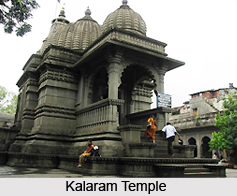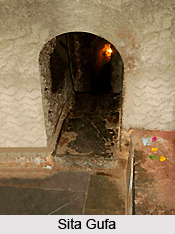 History of Nashik district has been seen following a long journey, rooted in mythology as well as the district`s rich socio-cultural importance. Nashik has a rich historical past. No one knows when Nashik came into existence. It is said to have been present even in the Stone Age. According to mythology, Lord Rama, the King of Ayodhya, made Nashik his adobe during his 14 years in exile. At the same place Laskhmana, by the wish of Lord Rama, cut the nose of `Surpanakha` and thus this city situated here was named as `Nasik`. In Kritayuga, Nashik was `Trikantak`, `Janasthana` in Dwaparyuga and later in Kalyuga it became `Navashikh` or `Nashik`. Renowned poets like Valmiki, Kalidasa and Bhavabhooti have paid rich tributes here. Long ago, Brahmadeva had meditated in Padmasana here, so Nashik was also called Padma-Aasana for some time. It is also believed that, Lord Vishnu had defeated the three demons and thus the city also had the name Tri-Kantak (Tri-Three).
History of Nashik district has been seen following a long journey, rooted in mythology as well as the district`s rich socio-cultural importance. Nashik has a rich historical past. No one knows when Nashik came into existence. It is said to have been present even in the Stone Age. According to mythology, Lord Rama, the King of Ayodhya, made Nashik his adobe during his 14 years in exile. At the same place Laskhmana, by the wish of Lord Rama, cut the nose of `Surpanakha` and thus this city situated here was named as `Nasik`. In Kritayuga, Nashik was `Trikantak`, `Janasthana` in Dwaparyuga and later in Kalyuga it became `Navashikh` or `Nashik`. Renowned poets like Valmiki, Kalidasa and Bhavabhooti have paid rich tributes here. Long ago, Brahmadeva had meditated in Padmasana here, so Nashik was also called Padma-Aasana for some time. It is also believed that, Lord Vishnu had defeated the three demons and thus the city also had the name Tri-Kantak (Tri-Three).
In 150 BC, Nashik was considered to be the country`s largest market place. From 1487 AD, this province came under the rulers of the Mughal dynasty. The Mughals were fascinated by the beauty of the city and renamed it as `Gulshanabad` meaning the city of gardens. Beautiful fresh flowers were sent to Aurangzeb from Gulshanabad i.e. Nashik. It was also the home of Emperor Akbar, and he has expounded in detail about Nashik in Ain-i-Akbari. But it was during the rule of Peshwa Raj in Maharashtra, when the place was finally renamed as Nashik. It was also known as the `Land of the brave` during the regime of Chatrapati Shivaji Maharaj. During the period of Peshwa rule, Raghobadada and his wife Anandibai settled down at `Anandwalli` in Nashik. There are some remains of Anandibai`s fort. There is also a temple called `Navasha Ganapati` built by Anandibai. It was during the British rule in April 1818, when Nashik once again regained its importance. The British fell in love with the beauty of the city and developed it in various fields. The Golf course, developed by the British, was one of the largest in Asia.
In 1869 Nashik was made a full-fledged district with its present talukas. With the return of peace Nashik flourished into prosperity. Reasons, political, religious, as well as commercial led to its rapid development. With the construction of the railway, going from Mumbai to north-east, religious minded devotees came to be attracted to the town in ever increasing numbers where they made their purchases of various artistic and useful articles. This made Nashik a great trade centre where artisans skilled in manufacturing utensils and smiths excelling in workmanship in silver and gold crowded to ply their trade.
Already Nashik was a highly flourishing town even under later Maratha rule and, it was some time during this period when the sahukar families like Barves, Vaishampayans and Gadres of the locality started their financial activity. Under Maratha rule, they advanced sums to finance military campaigns of feudal Sardars, and in their later times their Pedhi`s gradually began to finance the flourishing trade in metalware and fabrics as well as grapes and onions. By the middle of the 19th century, British rule was firmly established and the public life of Nashik began pulsating with activities suited to the times. In 1840 `Native Library Nashik` was established; in 1861, an Anglo-vernacular school was started and in 1864, the town came to have a municipality of its own. Nashik played a prominent role in India`s freedom struggle as well. One of the most outstanding incidents during this time was when Anant Kanhere shot the collector Jackson in Vijayanand theatre on 21st December 1909. This was a direct challenge to British rule during the time. The people involved in the incidence, Anant Laxman Kanhere, Krishnaji Gopal Karve and Vinayak Ramchandra Deshpande were sentenced to death. It was during this time that `Abhinav Bharat ` was formed. The young Nashikites were influenced by the speech of Lokmanya Tilak given on the 26th of August 1906, and Veer Savarkar successfully organised underground movement against the British rulers. Post India`s Independence, uptil 1960,
Nashik district was part of the state of Mumbai, which in 1960 split into the states of Maharashtra and Gujarat.



















